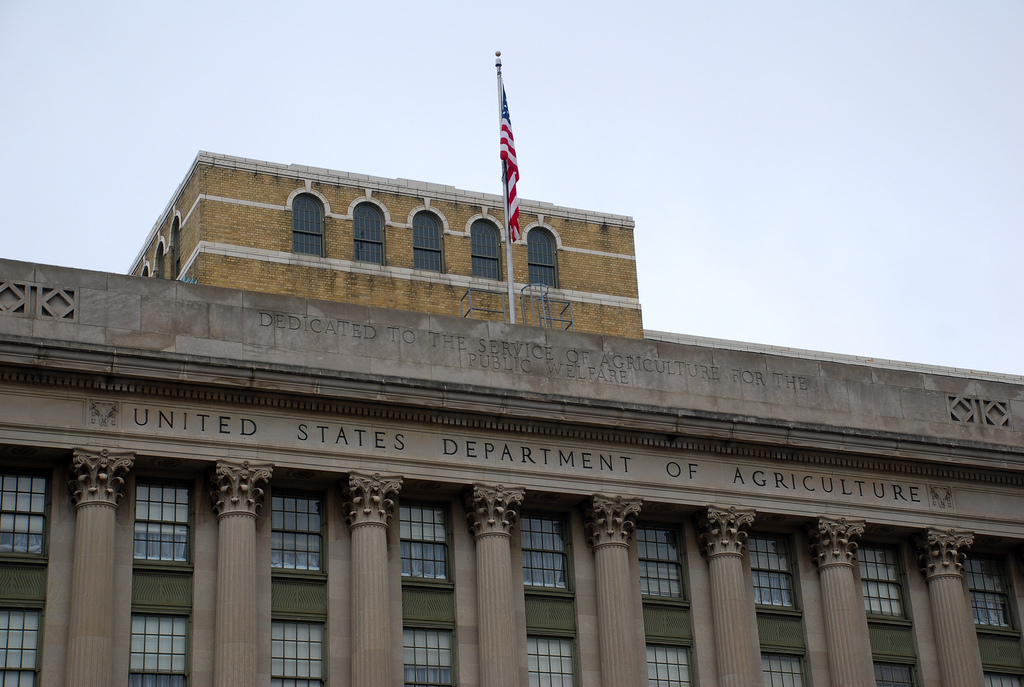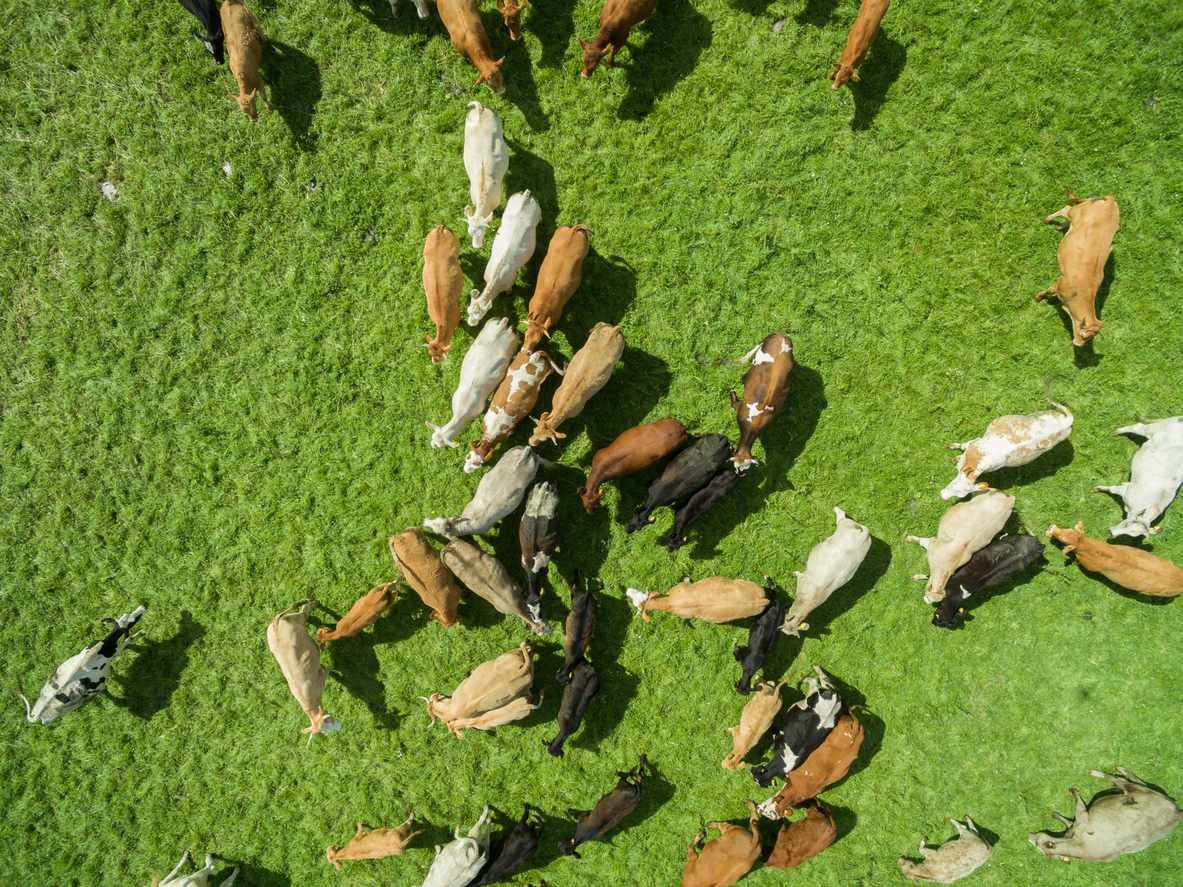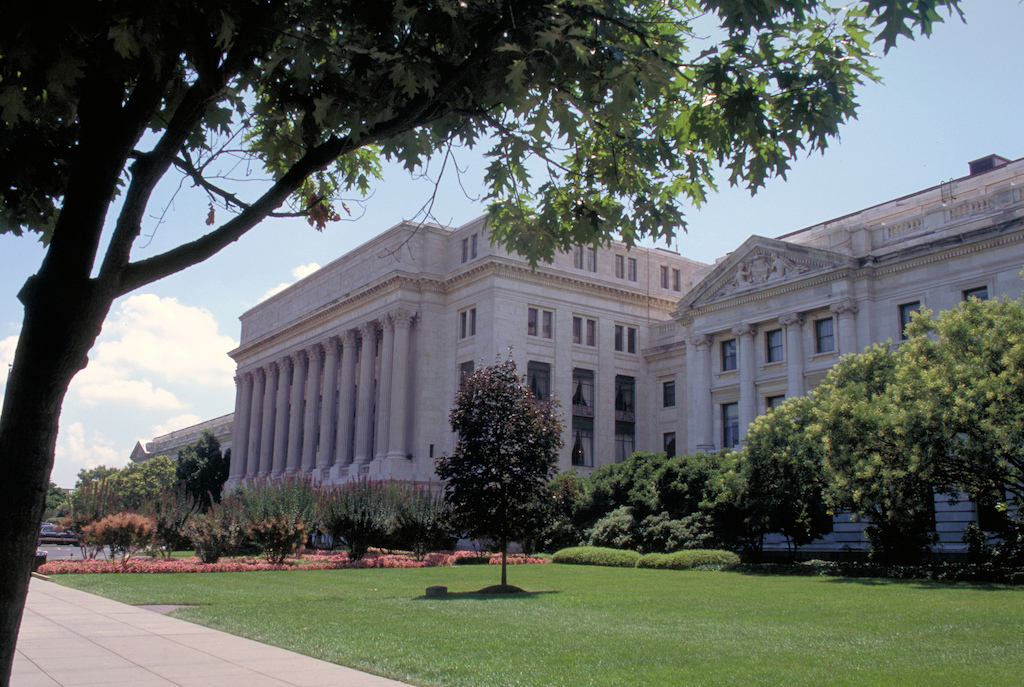The Economic Research Service has undercut Trump’s claims about food stamps, farming, and the environment. Now, it’s about to get booted from Capitol Hill.
Last Tuesday, staffers at the Economic Research Service (ERS), the research arm of the United States Department of Agriculture (USDA), were called to a town hall meeting, where departmental leadership gave further details on what had been announced the week prior: The office was losing its independent status in the agriculture department, and being moved under the Office of the Chief Economist. It would also be moved out of Washington, D.C., likely to a Midwest location, by the end of next year.
Pictured above, a USDA building in Washington, D.C. Engraved above its pillars are these words: “Dedicated to the service of agriculture for the public welfare.”
This article was a finalist for the 2019 North American Agricultural Journalists Writing Contest (news category).
The announcement of the move, which is expected to lead to mass buyouts and early retirements, took many in the agency by surprise. Indeed, ERS economists I contacted said veteran staffers intend to stay in Washington and find employment elsewhere, rather than move outside the Beltway.
“We’re finding out about this just as you are,” Howard Elitzak, a food markets economist, said when I reached him by phone. He declined to comment further, calling the move a “tenuous” situation.
What does ERS do, exactly? The agency of approximately 300 employees conducts a broad range of research on the American agricultural economy, issuing monthly commodity forecasts and trend reports on global trade, rural economics, food insecurity, and the changing face of family farms, among others. The agency’s releases are fundamental for policymaking, used by members of Congress and the office of the agriculture secretary, and a go-to source for reporters like me.
In his announcement, USDA Secretary Sonny Perdue described the agency move, one that also includes the National Institute of Food and Agriculture (NIFA)—the agency responsible for allocating research funding at land-grant universities—as a cost-saving measure. Indeed, President Trump’s last budget called for a 50-percent slash in funding for ERS. This follows a year of significant reorganizations in the agriculture department, and a culling of thousands of employees—more than in any other federal department.
Some observers say what’s happening to ERS is no ordinary belt-tightening. Since 1994, when ERS was first separated from the Office of the Chief Economist, the agency’s research has been seen as independent, objective, and crucially non-political within the agriculture department. Returning it to the chief economist’s office could potentially dissolve the “firewall” between the scientific and political arms of the department. Joseph Glauber, a former chief economist, disputes that assessment, telling Government Executive that the office is “objective.”
Others, including current ERS economists, see the move out of D.C., and the shrinking size, as consistent with actions of an administration that has been notoriously hostile toward scientific and research findings. It wouldn’t be unreasonable to think that an administration led by a president who’s been known to revoke security clearances from officials who’ve been critical of him, would also be happy to move a government office that puts out research that isn’t totally aligned with White House messaging—or policymaking—a little out of its way.
Contrary to what President Trump likes to say, the ERS hasn’t found that trade deals are killing farmers.
“ERS researchers cannot see a justification for the move,” says an ERS economist who asked not to be identified for fear of retaliation. “ERS’s purpose is to provide research integrity, statistical analysis, and valuable information for policymakers in the capitol. Can moving to the Midwest justify our purpose, from that perspective?”
Put another way: “There are 16 agencies at USDA. Why these two? And they’re both science- and statistics-based?” Ann Bartuska, a former acting undersecretary for research, education, and economics at USDA, told Politico.
Take, for example, what ERS has found about the Supplemental Nutrition Assistance Program (SNAP, formerly food stamps). Farm bill negotiations ahead of the vote, which is expected at the end of September, have been held hostage over Republican efforts to push for stricter work requirements. Leaders have publically said—as has the president—that SNAP use is out of control, and as an anti-poverty program it’s failing because the number of Americans who rely on it is higher than ever.
Republican messaging is flatly contested by ERS. In a recent, peer-reviewed report—ERS studies are all peer-reviewed—researchers found that participation and federal spending on the program have dropped every year since 2013. Last year, those rates fell by 5 percent and 4 percent, respectively. (As of early August, participation sat around 41 million—more than a million fewer participants than the program had in 2017.)
ERS findings are also not in line with the Trump administration when it comes to issues surrounding the environment.
Contrary to what President Trump likes to say, the agency hasn’t found that trade deals are killing farmers. Years of agency reports, including one released in February of this year, have found that increased trade benefits American farmers. Nor has the agency found that “our farmers have been hurt for 15 and 20 years”—roughly as long as we’ve been selling soybeans to China. In fact, ERS analysis found that net farm income was on an upward trend from 2000, until hitting a peak in 2013. Meanwhile, farmers’ overall income, which includes off-farm earnings, has actually been rising since 2016.
The administration has also been hostile toward science and research that has proven climate change is real and affecting our weather patterns—among other things. A 2015 ERS report found that greater incidences of extreme weather and increased variability wreak havoc on farm production. By 2020, ERS predicts, production of corn, oats, and soybeans will have decreased by more than 8 percent due to changes in precipitation and added concentrations of carbon dioxide in the atmosphere. The higher crop prices that will result won’t offset lost revenue from lower yields, the agency found. (ERS has also found that heat stress from climate change could lower dairy productivity.)
And here’s another thing: The Trump administration, and former Environmental Protection Agency (EPA) Administrator Scott Pruitt, have attempted to roll back the Clean Water Act, and loosen restrictions on pollutants, like nitrogen, that enter waterways through soil runoff. But ERS research finds that cleaning those messes has been costly. Over the last two decades, the agency found, the agriculture department has spent $4.2 billion restoring and protecting wetlands, with the costs of removing nitrogen running up to $6,100 an acre in the Corn Belt. Hard to imagine that with looser restrictions we’ll end up spending less on clean up.
Then there’s crop insurance—a program that, among other conditions, allows grain farmers to receive government payments if their crop value falls below a set price. The president has promised farmers he’d make it work for them, and told Republican Congressman Mike Conaway, chairman of the House agriculture committee, to make it better and make it great.
“We’re finding out about this just as you are.”
But ERS research has found that crop insurance, while perhaps a useful safety net, doesn’t do much for growth: Farmers reported a 1-percent gain in grain acreage during years of increased participation. That finding, and other ERS research, was cited in a Congressional Budget Office (CBO) analysis of crop insurance, released late last year, that found the program was bloated, and costing billions of dollars that could be trimmed without a major loss in covered acreage. (During farm bill negotiations, an amendment to limit subsidies for high-earning policyholders, co-sponsored by Democratic Senator Dick Durbin of Illinois and Republican Senator Chuck Grassley of Iowa, was withheld from the Senate floor.)
That’s not to say that ERS research always conflicts with White House stances. In fact, ERS analysis of the Republican tax cuts, which was released last month, did find tax savings for the majority of farms of all sizes. At the Farm Bureau convention in January, Trump told the audience, basking in the afterglow of his successful push for tax reform, that “from now on, most family farms and small business will be spared—and it really is the word punishment—of the deeply unfair estate tax known as the death tax.”
That’s true, according to ERS: Trump’s tax reform will spare 99.89 percent of family farms from a tax liability. Of course, what he failed to mention was that his prognostication was, at the time, already a matter of fact—and that taxes under President Obama spared 99.14 percent.














